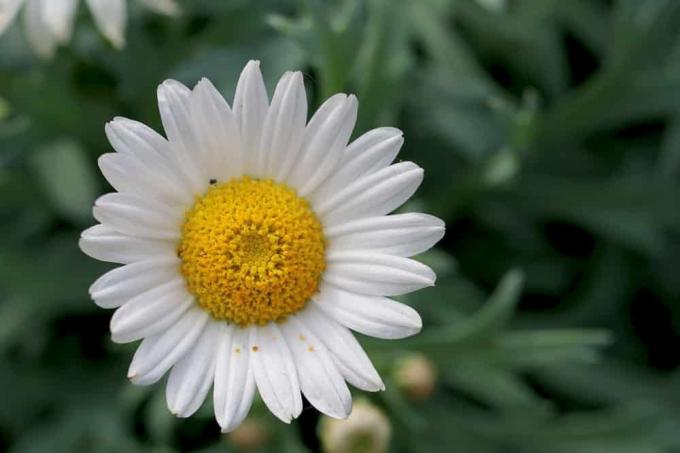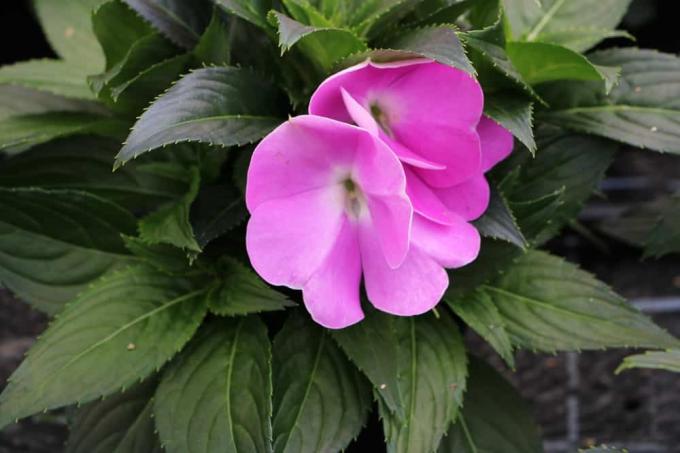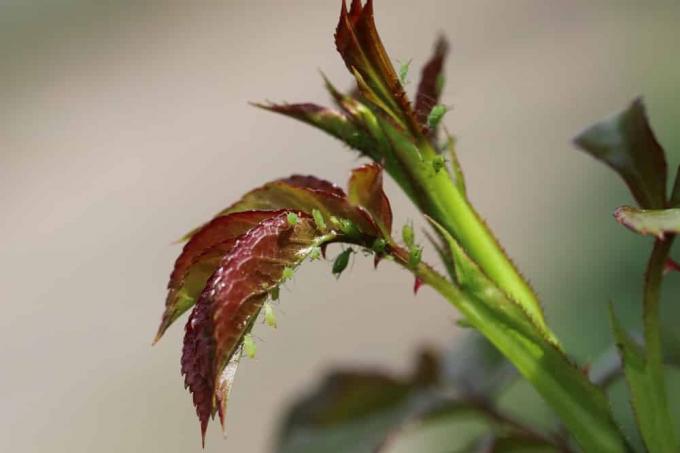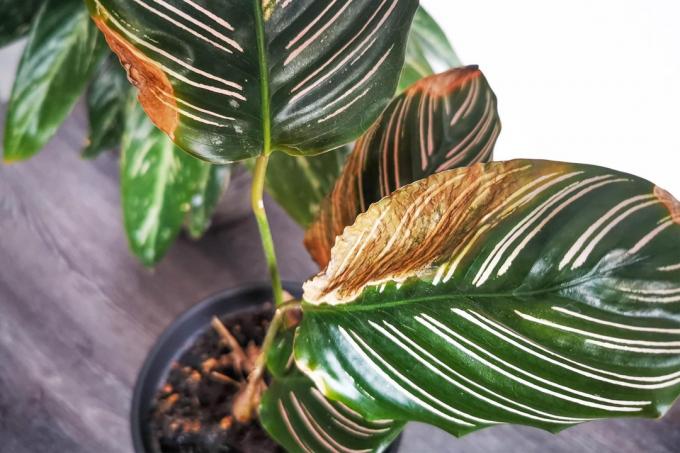

Table of contents
- Impatiens New Guinea - Wanted Poster
- Location
- cultivation opportunities
- plant neighbors
- Pour
- Fertilize
- Cut
- multiply
- Propagation via cuttings
- Propagation by sowing
- hibernate
- diseases and pests
- spider mites
- thrips
- aphids
The Edellieschen is a worthwhile plant both in the garden and as a houseplant. Depending on how the gardener stages it, it draws everyone's attention on its own or impresses with the support of colorful flowers in a considerable sea of plants. As a reward for the beautiful look, however, it requires a few care measures.
Impatiens New Guinea - Wanted Poster
- Plant genus: Balsam plants
- Breeding form of the industrious Lieschen
- remarkably tall growth, large flowers and narrow leaves
- grows up to 40 cm high
- not hardy
- with conscientious care perennial
- Pot or window box plant
- Flower color: white, pink or red, rarely violet
- Flowering period: June to October
Location
Impatiens New Guinea prefers bright 'locations. A too shady location punishes the plant with a stunted growth. On the other hand, the plant should never be exposed to the blazing midday sun. The burning of the leaves and flowers would be the result. Ideally, the rays of the morning and evening sun reach Edellieschen. The location under an eaves is therefore particularly suitable. This offers protection against rain at the same time. How well the plant tolerates precipitation ultimately depends on the variety. The Impatiens New Guinea breed is considered to be very robust in this regard.
The plant proves to be somewhat less demanding in terms of substrate. With conventional potting soil, it is already frugal. However, it should be humus, loose and above all permeable, because waterlogging immediately means that the Edellieschen will die. Here it is important to find the healthy middle ground between a constantly moist but never too wet soil.
cultivation opportunities
There are many ways to present the Edellieschen attractively:
- as a color accent in the bed
- in tuffs
- as grave decoration
- to the border
- on woody edges
- in a bucket under a roof overhang
- in a pot on the windowsill
plant neighbors

The variety of colors of the Edellieschen can be wonderfully combined with other flowering plants, provided they have the same location requirements:
- blue pillow
- elf spur
- hosts
- hussar button
- tuberous begonias
- daisies
- verbs
- Lantana
Pour
After the gardener has planted the Edellieschen, it only needs moderate watering. Only later does the need increase. Then make sure to keep the substrate moist at all times. Moist in this case means that the earth must not dry out, but must never form waterlogged. In addition, the gardener only waters the soil, but not over the leaves. Collected rainwater is best. Beginning in September, Impatiens New Guinea require a rest period that includes reduced watering.
Tip:
If it is a bedding plant, a layer of mulch saves the gardener a lot of work. This protects the soil from drying out even in strong sunlight and in this way reduces the amount of water required.
Fertilize
Fertilizer is useful to encourage flowering. Commercially available fertilizer is perfectly adequate for this. The dose is given every two weeks during the growth phase and at six-week intervals in winter.
Cut
In the case of the rather small Edellieschen, pruning is of course not aimed at inhibiting growth. On the contrary, with the targeted shortening of the leaves, the gardener creates a bushier growth. By removing wilted flowers, the plant has more energy to invest in forming new foliage. Newly forming fruit capsules are only interesting for propagation. If this is not provided, they should be removed immediately. It also happens that flowers stick to the leaves. The gardener should also carefully pluck these off, otherwise there is an increased risk of the Impatiens New Guinea contracting gray mold.
multiply

In view of the beautiful appearance, it is no wonder that there is a desire for several Edellieschen. How fortunate that there are no costs involved, as propagation is very easy. The gardener even has several methods to choose from. On the one hand, sowing the seeds you have won yourself is conceivable. Propagation by cuttings is particularly simple.
Propagation via cuttings
- Cut cuttings in late summer
- suitable are young, not yet lignified shoots
- Length 5-8 cm
- Remove buds and leaf bases
- Mix peat and sand
- Fill substrate in growing pots
- Stretch foil over the pots and poke small air holes in them (prevents water evaporation)
- Repot shoots after two to four weeks
- fertilize for the first time after six weeks
- put outdoors from mid-May
Propagation by sowing
- harvest the seeds from the mother plant between May and August
- dry in an airy, dry place
- Store seeds in a light-protected place until March of the following year
- Prepare seed pots with nutrient-poor soil
- Press in the seeds lightly
- Moisten the substrate with water from a spray bottle
- Store seed pots in a bright place out of direct sunlight
- temperatures of 22°C are optimal
- Prick out shoots that are 3-4 cm long
- use conventional potting soil for the new pot
- Plant Edellieschen outside after the ice saints
Danger
It is advisable to clasp the fruit with one hand when harvesting, as balsams such as Impatiens New Guinea explosively eject their seeds when touched. The seed spreads uncontrollably in a radius of up to four meters in the garden and allows new plants to grow out of the ground in unwanted places.
A notice:
Did you know that propagation from cuttings is similar to the mother plant, while from seed a completely different flower color can appear?
hibernate

Because Impatiens New Guinea is not hardy, only houseplants are perennials. However, by digging up outdoor plants before the first frost and moving them indoors or into a warm conservatory, the gardener can also overwinter those specimens. The winter quarters should be bright but not too sunny. Temperatures of 15-18°C are ideal. For the winter, the gardener only waters Impatiens New Guinea again when the top layer of substrate has dried. The fertilizer application is reduced to once a month.
diseases and pests
As a cultivated form, Impatiens New Guinea is more resistant to diseases than the original plant, the hard-working Lizzie. However, the plant is not completely immune to parasites. The most common pests include:
spider mites
Conditions that promote spider mite infestation:
- dry room air
- occur mainly in autumn and winter
symptoms
- cobweb-like threads on the leaves (become visible when the plant is sprayed with water)
- bright speckles on the upper side of the leaf
- later light colored leaves
- dried leaves
Measures
- increase humidity
- Do not place Edellieschen near the heating
- Spray the plant regularly with water
- rapeseed oil solutions
- Neem Solutions
thrips
Conditions promoting thrips infestation:
- mainly occur in closed rooms
- low humidity
A notice:
Once thrips have established themselves on Impatiens New Guinea, they reproduce at lightning speed. Although the Edellieschen will not die, the pests still cause major visual damage. It is not uncommon for people to come into contact with the animals. However, there is no health risk here.
symptoms
- not visible to the naked eye (body size < 1mm)
- silver-grey spots on the leaves, occasionally also on the flowers
- brown plant parts in advanced stage
- deformed leaves
Danger:
Thrips are easily confused with spider mites. However, a clear finding is imperative, since both pests require different treatment.
Measures
- soapy water
- put the plant in fresh air for a few days
- Place predatory mites or lacewings on the plant (natural predators)
A notice:
The use of fungicides leads to long-term resistance of the pests.
aphids

Conditions that promote aphid infestation:
- a warm, dry or very humid location
- often without unfavorable conditions
symptoms
- visible to the naked eye
- green, black, white, yellow or red critters on the plant
- mostly found on the petiole and underside of the leaf
- stunted or curled leaves
- honeydew (sticky film on leaves)
Measures
- Spray the plant with a jet of water
- manual removal
- beneficial insects (ex. B. ladybug)
- neem oil
- nettle manure
- Field horsetail brew
- water-detergent solution
Danger:
Although treatment must be carried out as quickly and effectively as possible when the symptoms appear, chemically contaminated fungicides are by no means the drug of choice. Even homemade home remedies are successful, even if they only take effect after several applications.
If the home remedies do not bring about any improvement due to a very severe infestation, the gardener should inquire about biological sprays in specialist shops.
 garden editorial
garden editorial I write about everything that interests me in my garden.
Learn more about houseplants

16 cat-friendly houseplants
If you share an apartment with a cat, you should not have any poisonous indoor plants, because cats occasionally eat the greenery. There are many cat-friendly houseplants that are harmless and can recover quickly once a cat has bitten them.

Calathea gets brown leaves: how to save?
The foliage of a calathea, also known as a basket marante, has its price. And that doesn't mean the purchase price. The tropical plant wants to be cared for and feels like it is in its native rainforest. She expresses her dissatisfaction with unfavorable living conditions with brown leaves.

Monstera droops leaves: what to do?
Its serrated leaves make the Monstera one of the most popular indoor plants. But what can be the reason for it letting the leaves droop, and what can you do about it?

Water houseplants properly 15 tips for potted plants
Watering indoor plants properly sometimes turns out to be more difficult than expected. There are certain points you need to keep in mind when watering your indoor plants so they can show off their full glory. 15 tips on the subject can be found in this guide.

Efeutute, Epipremnum aureum: care from A - Z
The ivy or Epipremnum aureum is one of the most popular houseplants par excellence and is also ideal for people without a green thumb. You can find out how to care for the plant from A - Z here.

Christmas Cactus Losing Buds: 6 Reasons & Solutions
The Christmas cactus is a real feast for the eyes in the living room from late summer with its beautiful flowers. Unfortunately, it often happens that the houseplant loses its buds. Find out here what causes the buds to fall and how you can counteract them.



